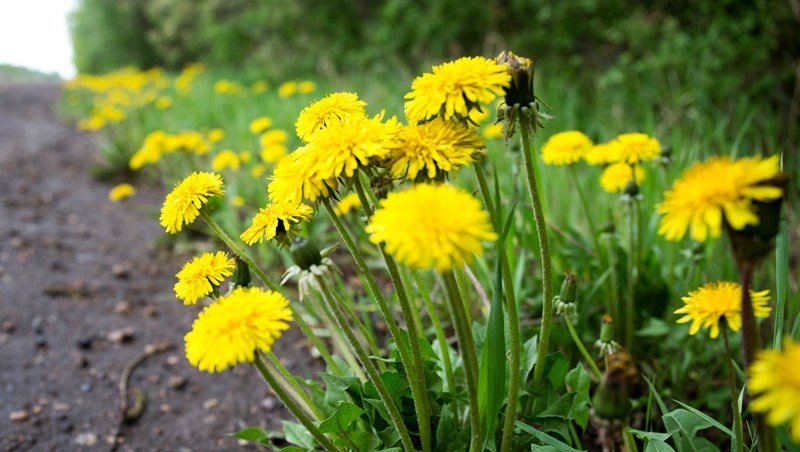St. Albert continues to skirmish with the resilient yellow-flowered broadleaf as other municipalities, such as Edmonton, have virtually surrendered to the hardy and ubiquitous dandelion.
Once labelled a nuisance plant, the dandelion fell off the province’s list of weeds in 2011. Seven weeds are deemed noxious and prohibited; another eight are called noxious and the Weed Act says they should be controlled. The dandelion has won its freedom.
Unlike Edmonton, which stopped spraying most municipal properties with herbicides to curb dandelion growth last year, St. Albert does spray the plant selectively, choosing one particularly infested neighbourhood each year for treatment. It also sprays around civic buildings, cemeteries and along Red Willow Trail. In the spring, crews go out to four locations with 24-inch hoops and chart the number of broadleaf plants within the hoop to determine the area most in need of spraying. Last year it was Heritage Lakes; the year before Woodlands got the treatment.
Kevin Veenstra, public works team leader for weed and pest control, says St. Albert’s approach to dandelions does include some spraying, but the key to managing the dandelion is proper turf management.
“Our dandelions aren’t considered a weed, but we do manage our property for turf health and broadleaf competition. It’s all about healthy turf.”
Veenstra says his department received about a dozen dandelion complaints last year, but the city won’t issue a warning or a ticket simply because a resident has a lot of dandelions on their lawn. There have to be more unsightly aspects to the property to warrant a bylaw citation.
“If a person isn’t keeping their yard, weeds, tall grass, they may issue a notice under the community standards bylaw.”
The Enjoy Centre’s Jim Hole admits he hates to see lawns and boulevards blanketed in dandelions, but understands there are two sides to the dandelion issue. For Hole, it’s a matter of respect.
“When all the seeds are flying around, the people who like to keep their yards neat and tidy and they see the influx of dandelion seeds, they’re not too happy about it. There has to be the right balance taken on the dandelion issue.”
Dandelions are tenacious competitors, and fighting them may mean reducing the amount of turf a homeowner is willing to live with, going to xeriscaping, for example. Hole says he’s seen a photo of a dandelion root eight feet long, and they thrive in the most inhospitable conditions.
“They are extremely resilient plants that can withstand an unlimited amount of cold and drought.”
Whether you’re looking at a city soccer field or a residential front lawn, he agrees good turf management is essential.
“If you keep your lawn in really good shape, water it properly, fertilize it, it will do a very good job competing with dandelions,” Hole says. He also says the quality of the soil is important. Dandelions do well when in clay and poor topsoil.
Products on the market that control dandelions include chelated iron, which is quite selective and won’t hurt your lawn. And there are conventional herbicides in the Killex family.
If the dandelion infestation isn’t extreme, long-handled dandelion forks are popular, and some people find removing the plants, root and all, therapeutic.
Veenstra notes that retailers have to report sales of herbicides and other pest-control products to the provincial government, and last year St. Albertans bought thousands of kilograms of corn gluten, which prevents dandelion seed germination, but it doesn’t kill the plant, which means repeating applications regularly during the growing season. Dandelions produce seeds without pollination, another advantage they have.
In the end, love them or hate them, dandelions are here to stay.
“You have to give them the nod for their ability to adapt to a wide variety of environments,” Hole concedes.
“There are the people that absolutely hate them and the people who tolerate them. And that hasn’t changed. I don’t see those feelings diminishing in either camp.”




